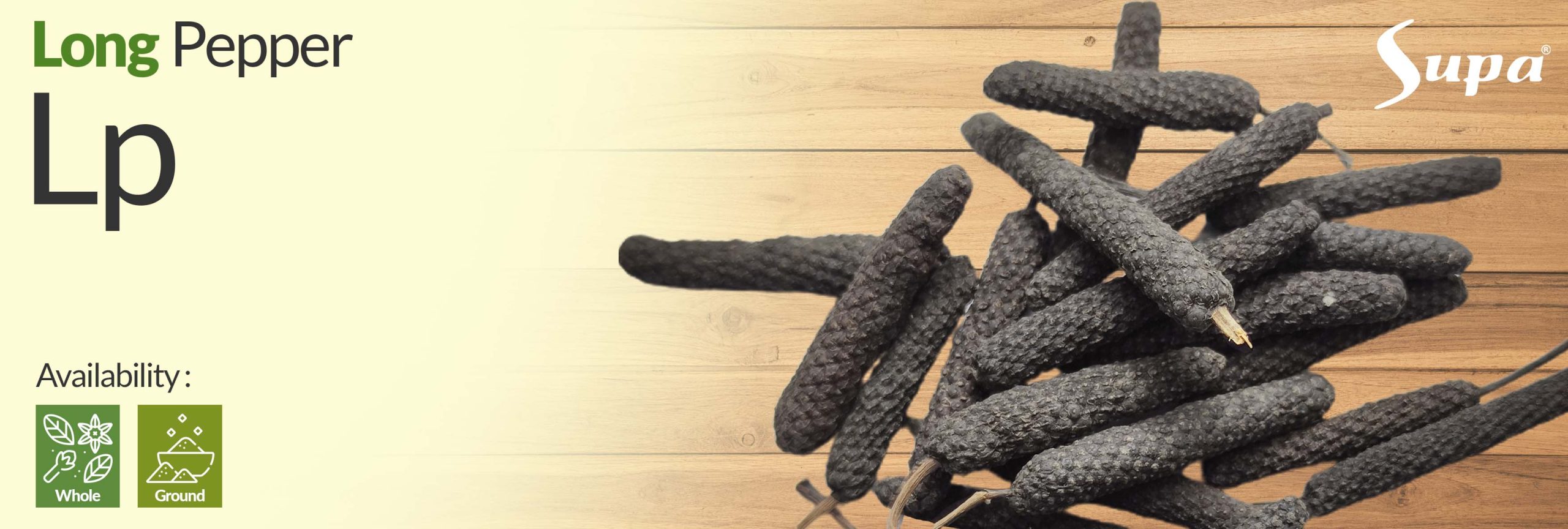
Long pepper, scientifically known as Piper longum, has a fascinating history that reaches back to ancient times and spans across various cultures. Originating from regions in South and Southeast Asia, including India and Indonesia, long pepper was one of the earliest known spices traded along the ancient spice routes. In traditional Ayurvedic medicine, it held a special place for its potential therapeutic properties.
Long pepper’s distinct appearance, resembling elongated spikes, contributed to its historical popularity as a spice. It was used in both culinary and medicinal contexts, with mentions in ancient texts like Indian Ayurvedic writings and ancient Greek medical texts. In these traditions, long pepper was believed to aid digestion, stimulate appetite, and alleviate various ailments.
While black pepper eventually became more dominant in global spice trade, long pepper continues to be used in certain cuisines, adding a pungent and spicy flavor. Additionally, modern research has rekindled interest in long pepper’s potential health benefits. The compound piperine found in both long pepper and black pepper has been studied for its potential effects on digestion, metabolism, and absorption of nutrients. Long pepper’s enduring legacy as an ancient spice with potential health advantages showcases its significance in both historical and contemporary contexts.
Flavor: Long pepper has a complex and unique flavor profile that is often described as slightly sweet, earthy, and more aromatic compared to regular pepper. It can also carry a hint of spiciness, but its flavor is generally milder than that of black or white pepper. Long pepper's flavor is less sharp and pungent, and it often contains sweet and herbal undertones. Taste: The taste of long pepper is characterized by its mildly spicy and warming quality. While it has a touch of heat, it tends to be gentler on the palate compared to other types of pepper. Long pepper's taste is usually well-balanced between its spiciness and other flavor components. Aroma: Long pepper has a warm and aromatic scent that is often described as fragrant, earthy, and slightly sweet. The aroma is more pronounced when the pepper is crushed or ground, releasing its essential oils and enhancing the sensory experience.
Culinary Spice: Long pepper is used as a spice to add a warm, spicy, and slightly sweet flavor to dishes. It's often used in Indian and Southeast Asian cuisines to season curries, chutneys, pickles, and spice blends. Digestive Aid: Long pepper has been traditionally used in Ayurvedic medicine to support digestion and alleviate digestive discomfort. It's believed to have carminative and digestive stimulant properties. Respiratory Support: Long pepper is sometimes used to support respiratory health. It's believed to help clear congestion, soothe the throat, and provide relief from respiratory issues. Herbal Remedies: Long pepper is used in various traditional herbal remedies. It's often included in formulations to promote overall wellness, stimulate appetite, and support immune function. Medicinal Tonics: Long pepper is occasionally used to make tonics and decoctions. These preparations are believed to have rejuvenating and health-supporting properties, especially when used in traditional practices like Ayurveda.
Origin : Indonesia Botanical Name : Piper retrofractum Composition : Long Pepper Color : Black Moisture Content : Max 14% Shelf Life : 12 Months Loadability : 20 FCL Package : Carton Packing *For more detailed specifications, please feel free to contact us.
Company Profile Brochure PDF


